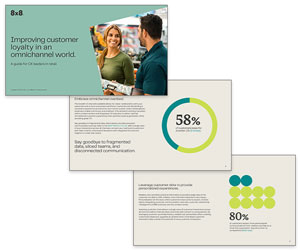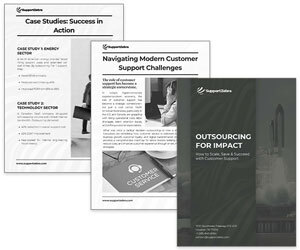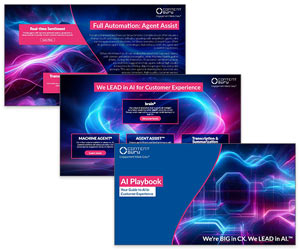Automated customer service emails are commonplace in the contact centre, but they are not always as effective as they could be. At best, they can be boring, at worst, they can be out of date and even create confusion and additional calls into the contact centre!
That’s why our Editor, Megan Jones, spoke to Dan Pratt, Leslie O’Flahavan, Mike Aoki, and Shep Hyken for their best advice on automated customer service emails – alongside sharing some real-life examples from brands including Audi, Ecotricity, Innocent Smoothies, PepsiCo, and OVO Energy.
1. Maintain Your Brand Voice and Even Include Humour (If It’s Appropriate to Do So)
Don’t miss the opportunity to write in your company’s brand voice!

“Take a closer look at the tone your automated emails are written in. Does it match your brand? If your brand is light and fun, your automated messages should have that same tone.
By contrast, if your contact centre is supporting a bank or insurance company, it should match that same formal tone.
So, give it some thought, even take a look at the company’s branding and style guides, and make changes to reflect it.” – Mike Aoki, President of Reflective Keynotes Inc.
Even include some humour, if it’s on brand to do so – as seen in this fun automated message from Innocent Smoothies:

This can extend to making it visually appealing too, taking it beyond just plain text – if your systems allow.
Just like this example email header from OVO Energy:
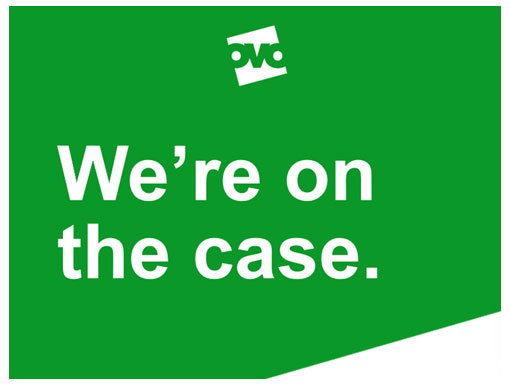
2. Take the Opportunity to Ask for Additional Information to Speed Things Up
Automated emails can also include useful time-saving messages, such as asking customers to send across additional information while they are waiting, to save some back and forth when the agent first replies.
It’s a helpful spot check for all the information the agent will need to progress the query – as seen here from Audi:

Automated emails also provide a good opportunity to remind customers to keep hold of anything they might need to progress their complaint. For example, see how PepsiCo take the earliest opportunity to advise customers to keep hold of the packaging they’ll need:

3. Add in the Customer’s Name
If your CRM system is capable of it (which a lot are now), why don’t you set up your automated emails to detect the email address it’s coming from and add in the customer’s name?
It’s a sure-fire way to lighten the tone and make it seem less robotic.
“This type of automated email adds some personality and starts to put your contact centre above and beyond just a generic out-of-office type response.” – Dan Pratt, Founder & Director of DAP Consultancy
Not sure if calling the customer by name is the right choice for you? Read our article: Should We Call Customers by Name?
4. Embrace the Power of AI to Respond With More Context
Above and beyond adding in the customer’s name, AI has opened up a whole heap of fresh opportunities for contact centres to do even better with automated emails.

“We’re now at an exciting time when AI can create personalized automated emails – even a campaign of emails!
Just think how much better it would be if your customers opened an automated response that said something like “Hi Kate, thanks for your email about the microwave you’ve just bought from us.
One of our agents will be in touch later today, but in the meantime we just wanted to thank you for doing business with us for the last 4 years.” – Shep Hyken, Chief Amazement Officer (CAO) at Shepard Presentations LLC
5. Point Customers to a Phone Number (If It’s an Emergency)
Email isn’t always the best or fastest option for every query, so make sure to point customers in the right direction if they will get a faster response on another channel – particularly if it’s an emergency.
We spotted this approach in action in an automated email response from Ecotricity:

6. Remind Customers You Also Have an App
Your automated emails can also be used to remind customers you have an app, where they may be able to self-serve when they download it – as this email from OVO Energy demonstrates:

7. Be More Thoughtful About Your Reply Options
Think twice about sending automated emails from donotreply@abccorporation.com with a simple message that says “Don’t reply to this email address”, as this can come across as blunt and unhelpful – and even rude.

You should phrase this more elegantly instead, as Leslie O’Flahavan, Principal and Owner at E-WRITE, explains:
“When writing a message that says, ‘don’t reply to this email address’, say it clearly with an explanation instead, such as ‘Please don’t reply to us here because we’re not monitoring this inbox’ – and then provide an alternative, such as ‘If you need further assistance, you can chat with us here’ or ‘Follow us on social media.’ Don’t just say, ‘Don’t reply.’ Give the customer a path forward!”
For tips from Leslie on how to improve your customer emails, read our article: The Secrets to Writing Better Customer Emails
8. Include Links to Self-Help Resources in Automated Emails
If you’ve got good FAQs, a self-help tool, or chatbot, refer to it in the email, such as, “In the meantime, while we’re looking into this, you may be able to find the answer to your query here.” – just as we spotted in this friendly “it’s worth having a look” automated email response from VANS:
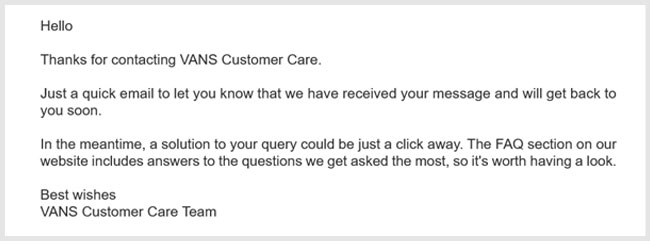
This can be really useful for simple queries such as baggage allowance for an airline, for example, as the customer might not want to wait for somebody to come back to them, and it might just prompt them to find the answer themselves.
However, don’t instantly abandon the conversation!

Circle back and check the customer found the answer they needed, as Dan Pratt explains:
“Read the room! It’s all well and good pinging an auto reply with a link to baggage allowance FAQs, but the person may still expect a response at some point.
After all, if someone has emailed you with a question, they generally want to speak to somebody, so be sure to close the loop.”
9. Set Clear Expectations on Response Times (and Then Do What You Said You Would Do!)
As a bare minimum an auto-response email should clearly state a timeframe for when someone will get back to them. E.g. We’ll respond within 2 days.
It’s about setting expectations, but also about honouring them. So if you say you’ll come back to them in 24 hours, make sure you do! Otherwise, they might end up sending another email or trying another channel instead.
10. Revisit Your Automated Messages Every Three to Six Months
And, last but not least, make it part of your regular housekeeping to check on these messages and edit them where necessary.
“Make sure that you revisit those messages every three to six months – certainly at least once a year – to make sure they’re still valid and the tone and writing are still effective.
Unfortunately, legacy messages do get stuck out there and can cause confusion and result in additional contact coming into your team.” – Mike Aoki
Automated Emails Reduce Duplicated Efforts Across Your Contact Centre
First and foremost, it’s good to have automated customer service emails set up – just to acknowledge safe receipt of the customer’s message and avoid duplicate messages being sent into the team.
That being said, as this article shows, there’s ample opportunity to elevate this message into something that’s far more powerful than just an acknowledgement. That’s why the very best contact centres take full advantage of these available features to make the most of their automated messages and enhance CX.
With thanks to the following people for sharing their thoughts and experiences for this article:
- Dan Pratt, Founder & Director of DAP Consultancy
- Leslie O’Flahavan, Principal and Owner at E-WRITE
- Mike Aoki, President of Reflective Keynotes Inc.
- Shep Hyken, Chief Amazement Officer (CAO) at Shepard Presentations LLC
If you are looking for more advice to help you improve your customer emails, read these articles next:
- Customer Service Emails and Letters: How to Review and Improve Your Templates
- 21 Quick Wins for Dealing With Chat and Email
- How to Assess Quality on Email and Live Chat in the Contact Centre
- What Is Customer Email Management? – With 10 Tips, Software Advice and Mistakes to Avoid
Author: Megan Jones
Reviewed by: Jo Robinson
Published On: 1st Apr 2025
Read more about - Customer Service Strategy, Automation, Customer Service, CX, Dan Pratt, Email, Leslie O'Flahavan, Mike Aoki, Shep Hyken, Top Story











